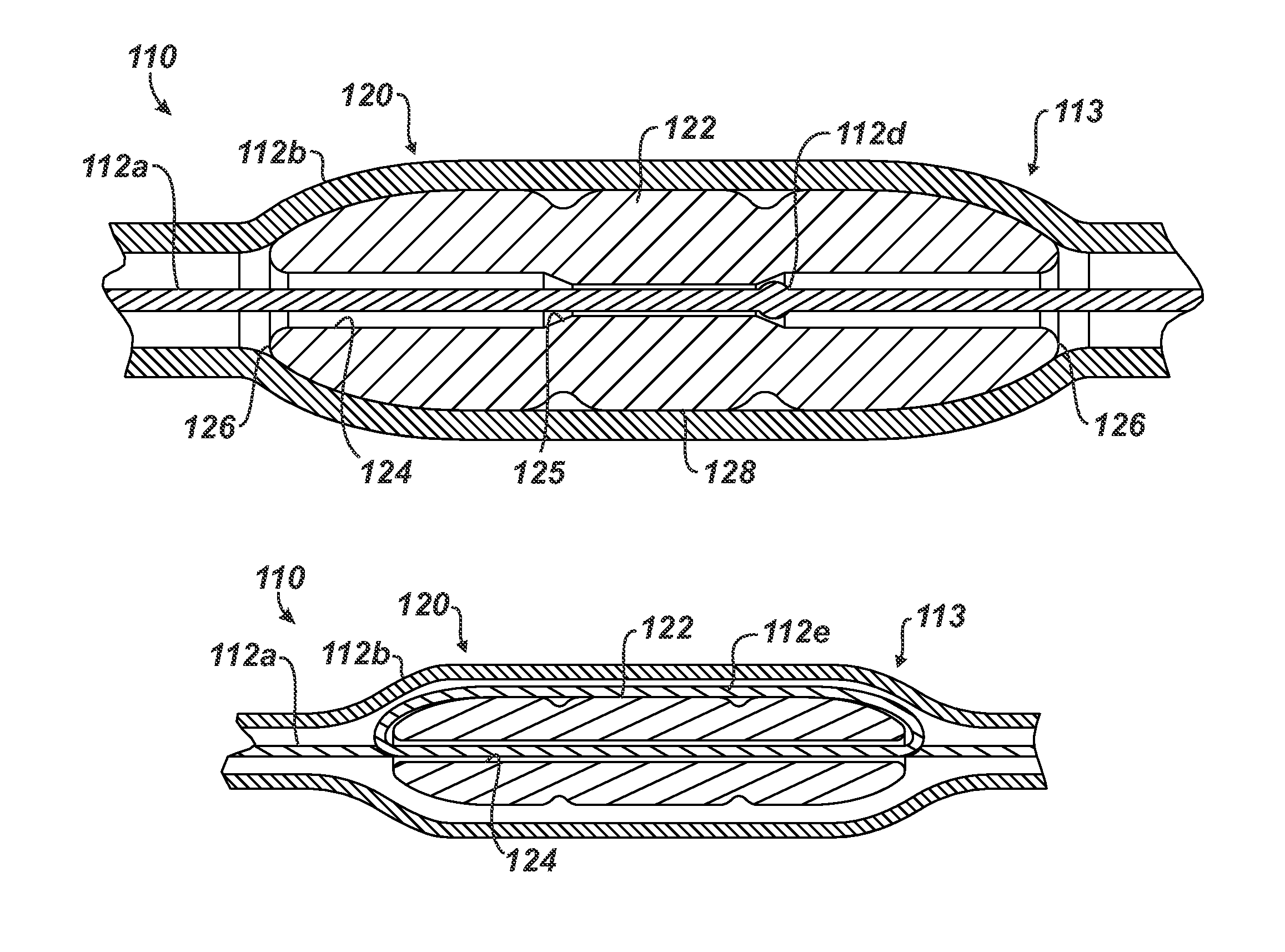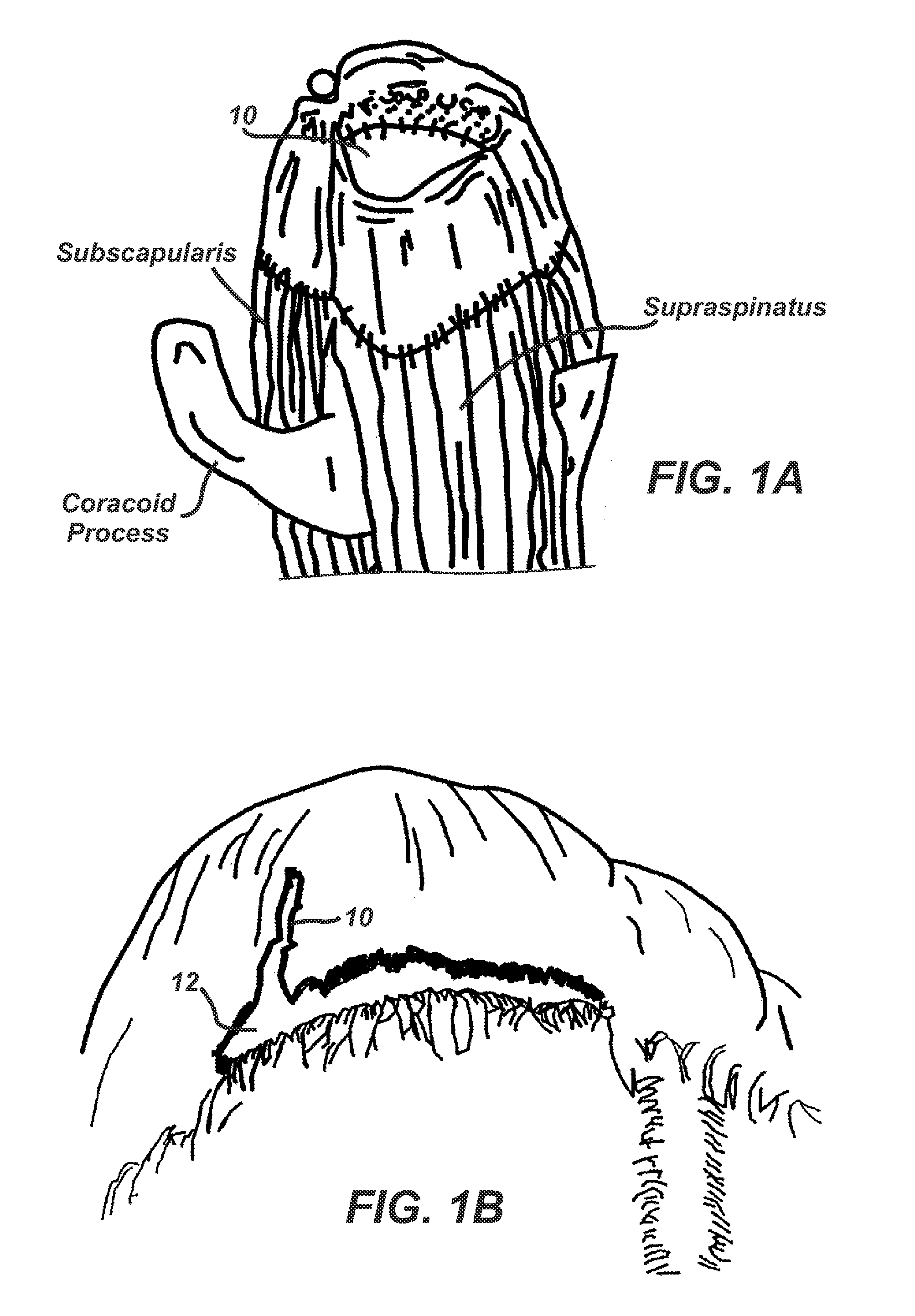Segmentally rigid suture and suturing technique
a segmental rigid and suture technology, applied in the field of segmental rigid suture and suturing technique, can solve the problems of affecting the function of the suture, so as to limit the compressive load
- Summary
- Abstract
- Description
- Claims
- Application Information
AI Technical Summary
Benefits of technology
Problems solved by technology
Method used
Image
Examples
Embodiment Construction
[0076]The subject matter of the present disclosure overcomes the shortcomings of current soft tissue repair techniques by disposing rigid components on suture, enabling the device to resist both tensile and compressive loads. For illustrative purposes, embodiments of the present disclosure and associated methods are described for use to repair rotator cuff tears. The techniques shown are compatible with arthroscopic surgery, however, it should be noted that those skilled in the art will recognize that the teachings of the present disclosure could use non-arthroscopic techniques to repair the soft tissue injuries without departing from the spirit or scope of the present invention. Those skilled in the art will recognize that the present disclosure can be used to repair other soft tissue injuries without departing from the spirit or scope of the present invention.
[0077]Before turning to the particular stitches disclosed herein for use in repairing soft tissue injuries, discussion firs...
PUM
 Login to View More
Login to View More Abstract
Description
Claims
Application Information
 Login to View More
Login to View More - R&D
- Intellectual Property
- Life Sciences
- Materials
- Tech Scout
- Unparalleled Data Quality
- Higher Quality Content
- 60% Fewer Hallucinations
Browse by: Latest US Patents, China's latest patents, Technical Efficacy Thesaurus, Application Domain, Technology Topic, Popular Technical Reports.
© 2025 PatSnap. All rights reserved.Legal|Privacy policy|Modern Slavery Act Transparency Statement|Sitemap|About US| Contact US: help@patsnap.com



